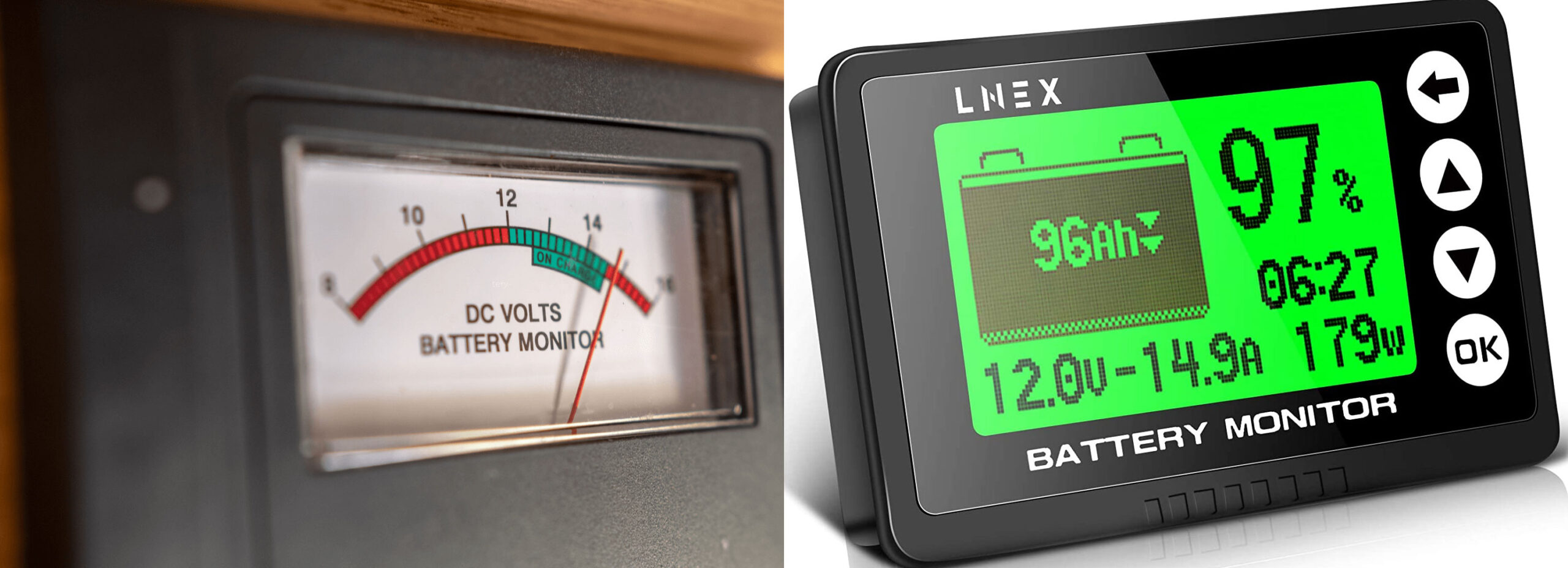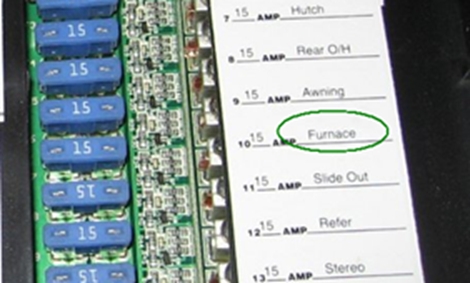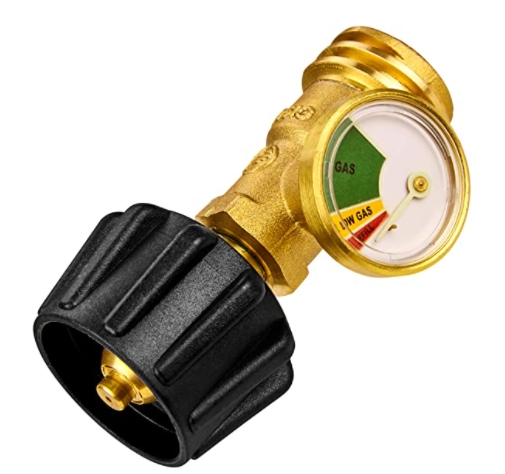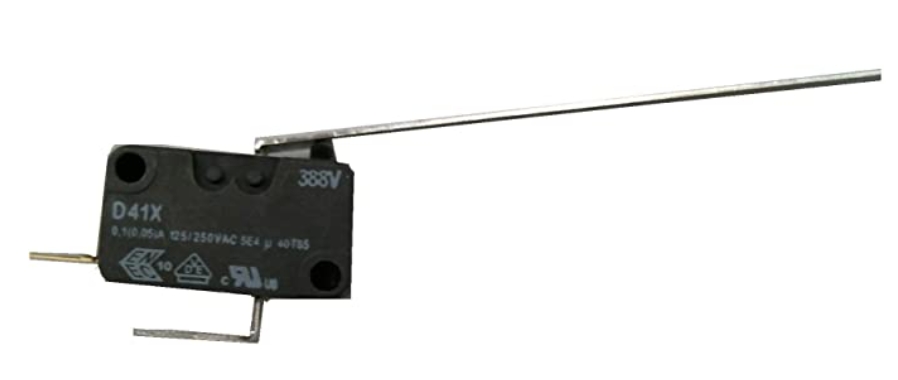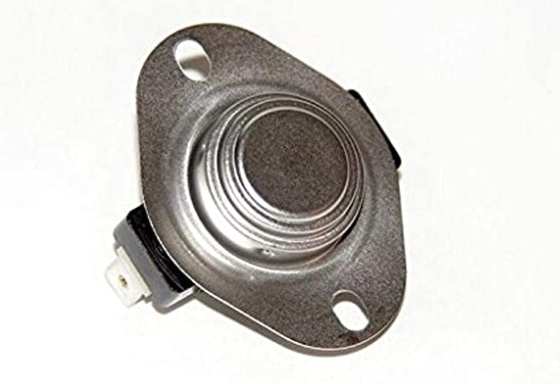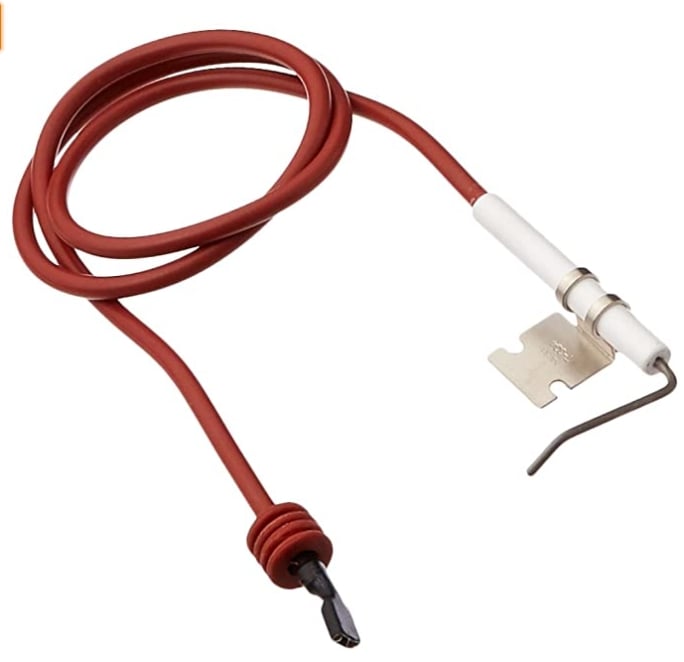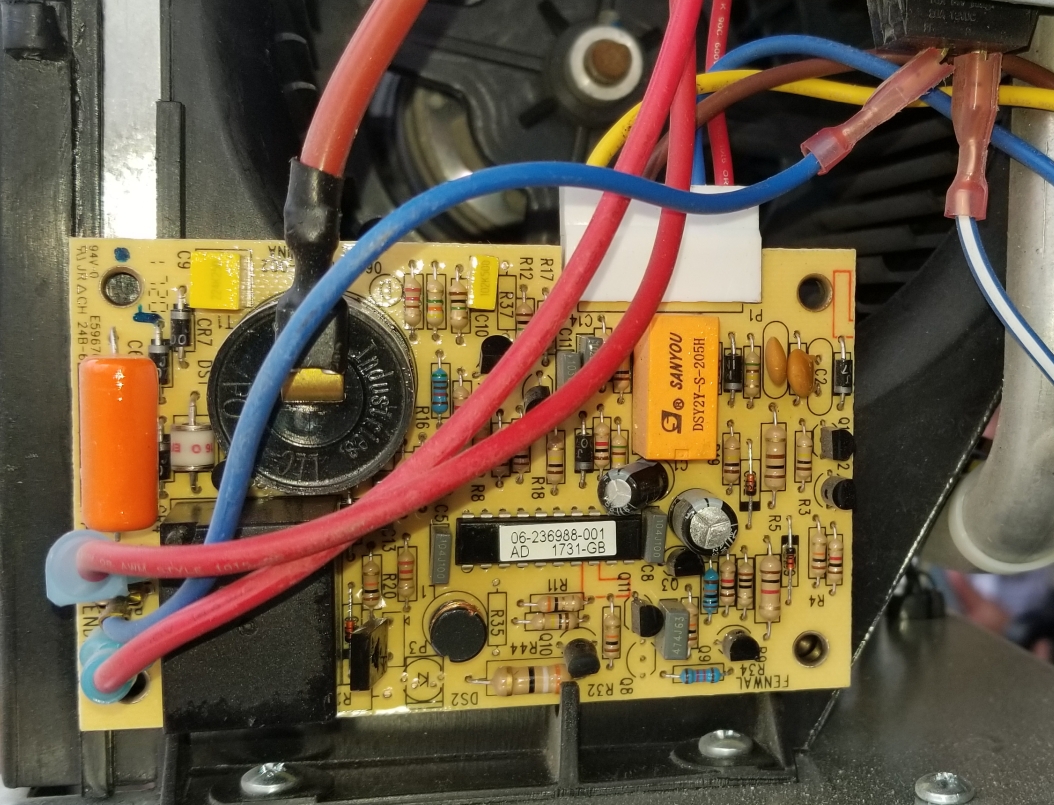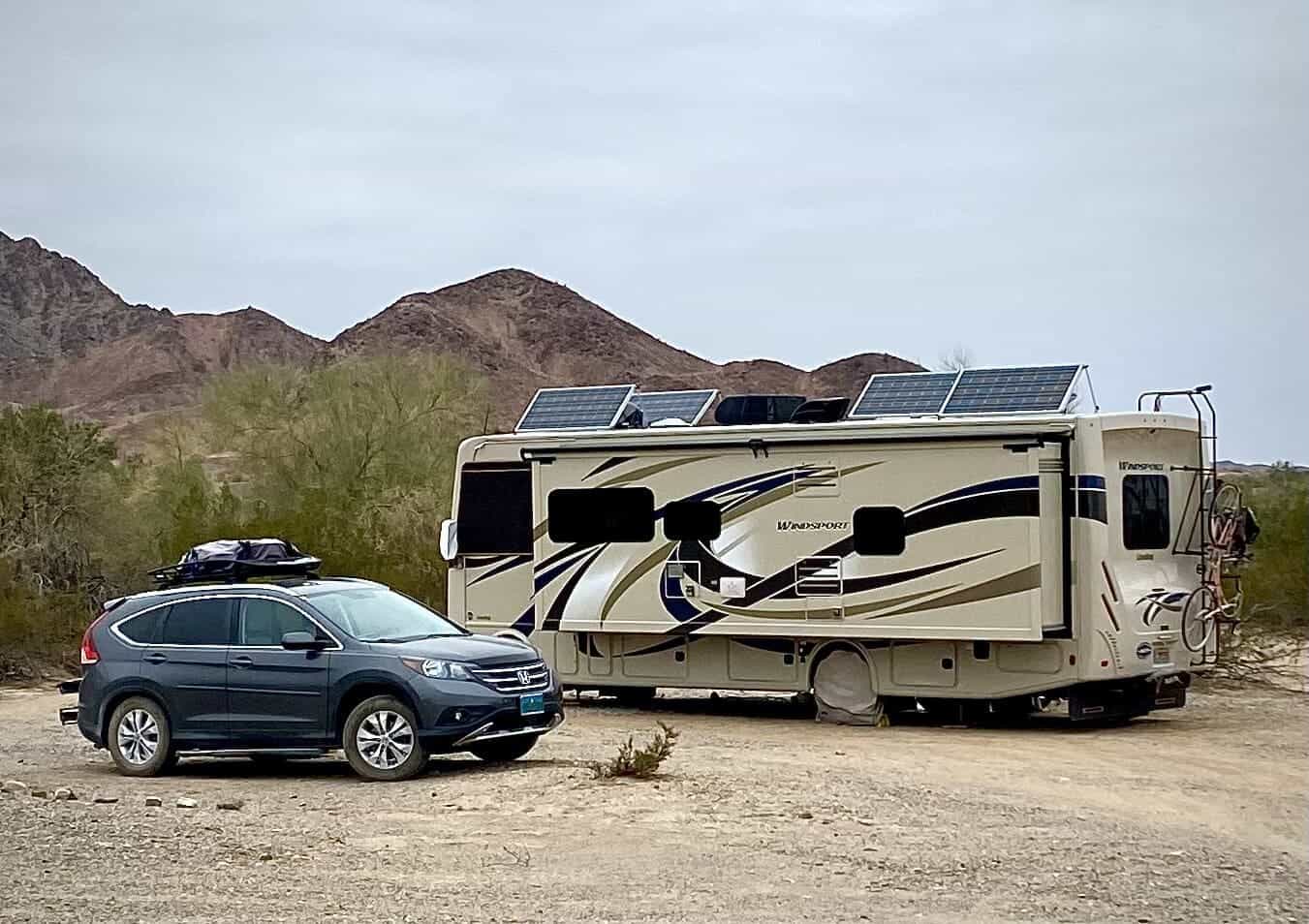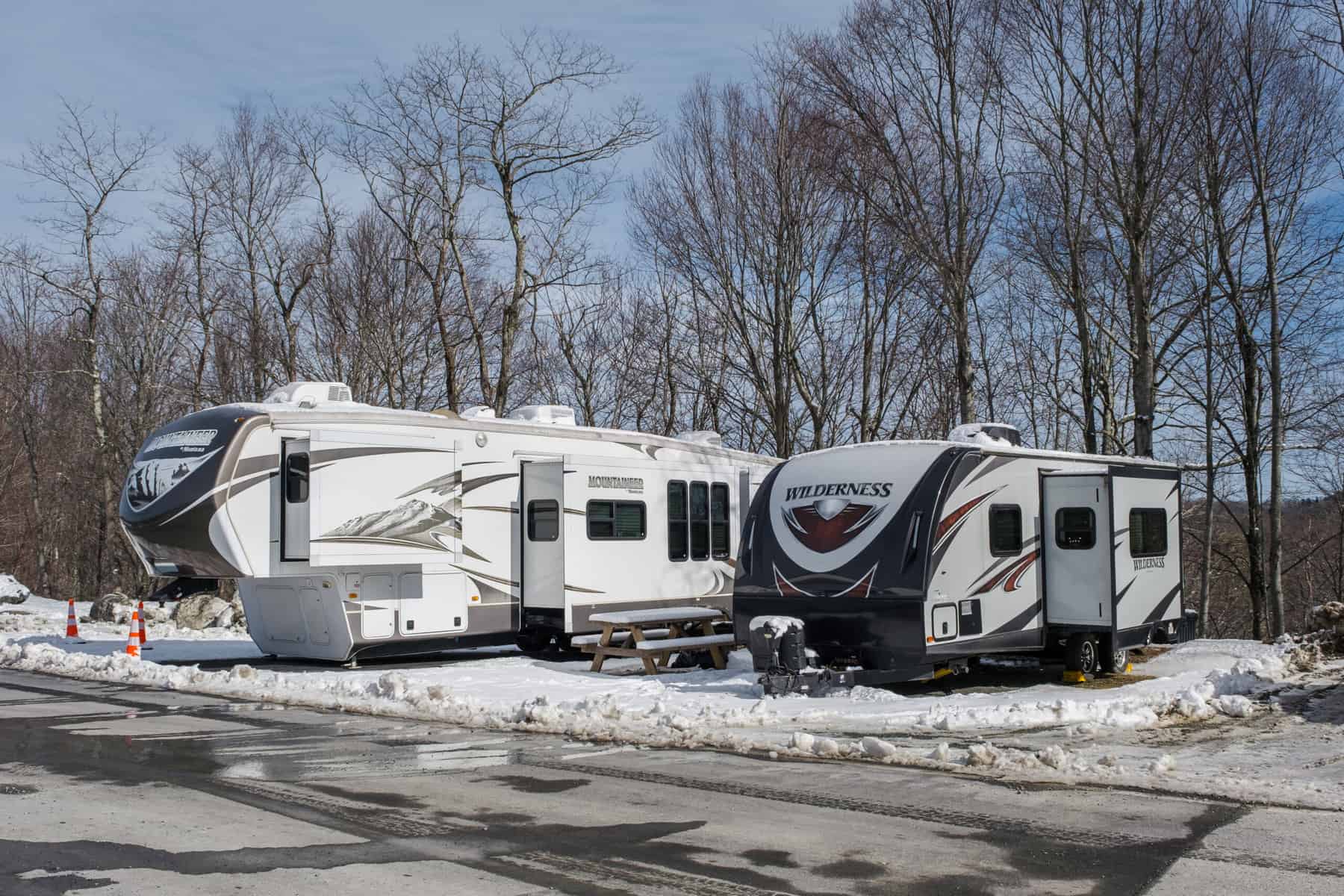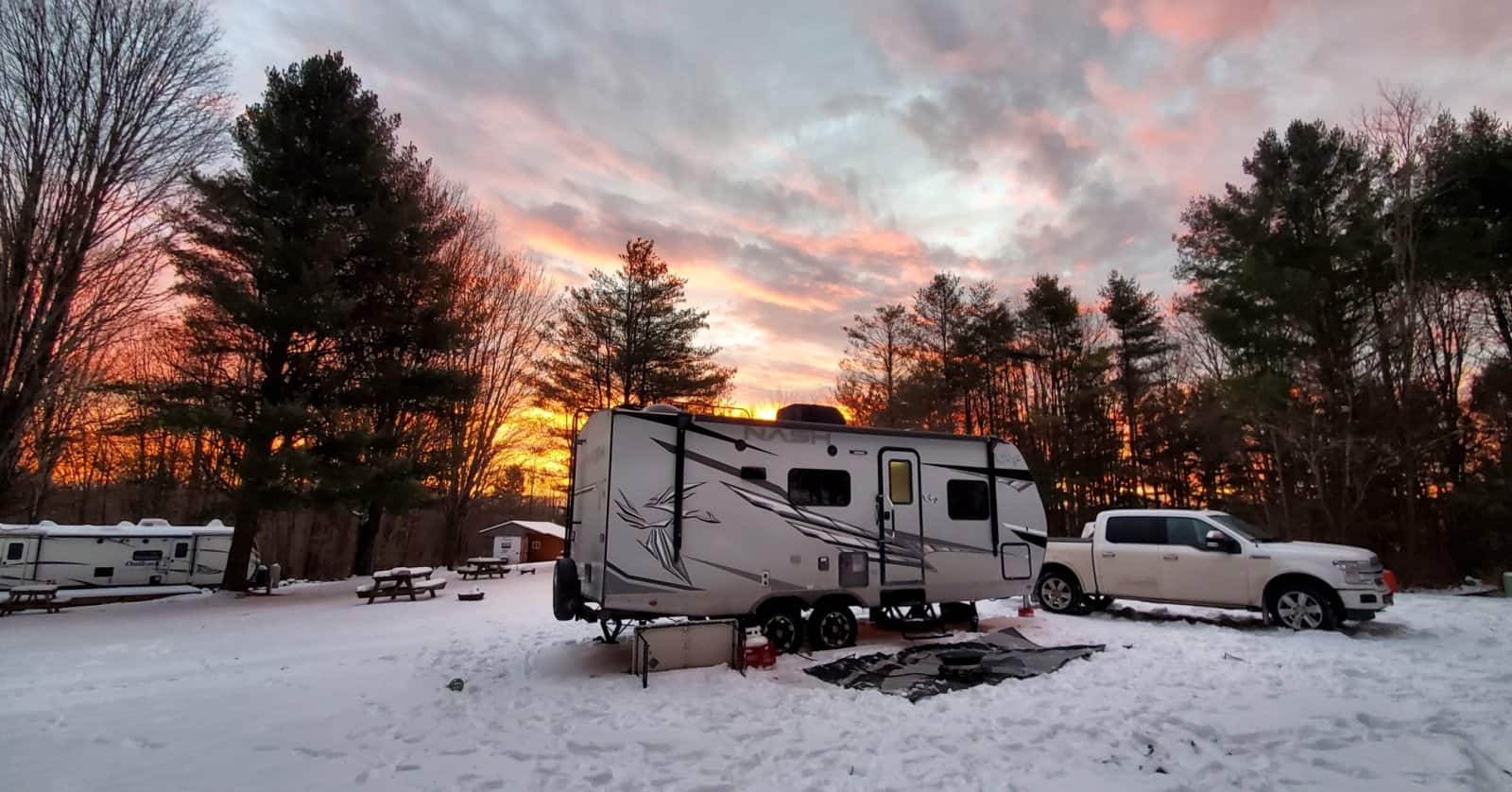Four-season camping is enjoyable when you’re prepared for cold weather. But if the temperature drops and your RV furnace is not working, you might be tempted to pack up and go home. But before you leave that great campsite, first try these troubleshooting tips. Hopefully one of them will lead to an easy field repair or at-home fix.
Key Takeaways
- A basic understanding of furnace parts and operations makes it easier to troubleshoot your furnace problem.
- Most RVers experience one of three common reasons why their RV furnace won’t work.
Reason 1: The blower fan does not come on when the temperature should trigger it.
Reason 2: The blower fan does come on, but turns off shortly thereafter.
Reason 3: Once turned on, the furnace never shuts off. - This article explains both novice and advanced level ways to troubleshoot and fix each potential RV furnace malfunction.
Step 1: Get to Know Your RV Furnace Parts
Before you can really understand why your RV furnace is not working, you need to have a basic knowledge of the typical RV furnace setup, and all related parts. Most RV furnaces are propane fueled. These systems usually consist of these major parts:
Power
Fused, 12-volt power supply
Fuel
Propane tank supply
Blower Fan
This moves the heated air into the duct or vents to heat the rig. It also supplies air for combustion.
Vents and Ducts
The path the heated air travels into the coach, and often, the underbelly.
Igniter
When it’s time to produce heat, the igniter sparks, causing the propane to ignite. The igniter assy also contains the flame sensor
Controller Circuit Board
Reads input from other sensors, opens, or closes the propane valve, triggers propane ignition, and starts or stops blower operation.
Sail Switch
This small sensor detects the movement of air created by the blower.
High Limit Switch
The RV furnace high limit switch is designed to turn off the burner if the temperature surrounding the combustion chamber becomes too hot. This is a safety feature
Thermostat
This can be analog (physical slide) or digital, where a desired temperature is set, and a signal is sent to the controller to tell it to turn the furnace on or off as the temperature changes to below or above that setting.
Step 2: Understand How Furnace Components Work Together
Your next job is to understand how the individual furnace components work correctly together to heat your RV. Here is a basic step-by-step way in which RV furnace systems work.
- The thermostat detects a lower temperature than the desired setting. (We’ll use 60° as an example.)
- Thermostat tells the controller to turn on the furnace.
- The controller turns on the blower. Then the blower fan pushes the heated air through the ducting along with air for combustion.
- The sail switch confirms to the controller that air is moving. This safety feature confirms the combustion chamber has been purged and that air is being supplied for combustion.
- The controller opens the propane valve to the ignition chamber.
- The controller triggers the ignition device to light the propane.The thermal sensor (which is part of the igniter assembly) tells the controller that there is now heat.
- The rig begins to heat up. When the thermostat detects the desired 60° temperature, it tells the controller to turn off the furnace.
- The controller closes the propane valve and the flame ceases.
- The blower may continue to run for an additional time to move the remaining heated air through the ducts, cool down the device and ensure any unspent propane is exhausted through the outside vents.
This is the ideal scenario of a working RV furnace. These various steps, while somewhat simplified, explain how all the pieces work together.
We have a 2019 Jayco Northpoint. Our furnace was working, this morning it was putting out cool air, not hot. Any thoughts?
Furnace Not Heating, @Patti, Jayco Owners Forums
The Three Most Common Reasons Why an RV Furnace Won’t Work
When an RV furnace is broken, it’s usually caused by one of two common scenarios. Let’s look at each.
Scenario 1: The blower fan does not come on when the temperature should trigger it.
Important: Whether air is moving or not is very important.
If there is no movement, then the heat and flame sit in one place instead of passing through the ducting. If this happens, the entire furnace unit, the housing and anything surrounding it could get excessively hot and possibly cause a fire.
Also, If there is no air movement the sail switch won’t engage, which prevents ignition. If ignition somehow still occurred, the limit switch would cut power to the board / gas valve. Combustion would be shut down before the furnace becomes too hot
Scenario 2: The blower fan does come on, but turns off shortly thereafter, and has only pushed cold air through the vents before turning off.
Here’s one possibility: The controller has gone bad and isn’t performing one or more of these responsibilities:
- opening the propane valve
- triggering ignition
- reading the sail switch confirmation
- reading the thermal sensor confirmation
Scenario 3: Once turned on, the furnace never shuts off.
If this happens, it could mean that:
- The thermostat isn’t reading the correct temperature, so its not telling the controller the desired temperature has been reached.
- The outside temperature is cold enough that the furnace simply cannot heat the entire area enough to reach the intended temperature.
This possibility can be problematic. You will run out of propane much faster. And your rig can reach a temperature higher than you anticipated.
A situation where the ambient temperature never reaches the intended setting can be tricky. While it’s important to keep the furnace running to prevent your Pex RV water lines from freezing, the constant operation of the unit will quickly burn through your propane. Once you’re out, you may have no way to heat the rig, especially if you’re boondocking.
Can RV Heat Pumps replace your broken RV furnace?
While an air conditioning unit that also has a heat pump can keep you from freezing during the cold temperatures, it most likely cannot send heat to the RV’s underbelly where the water lines are located. This is because most A/C units are located on the roof of the rig.
My furnace is not working. When the thermostat is set to FURN, nothing happens; no blower, no clicking, nothing. The gas is on and the stove lights, the thermostat is set to the correct mode and the temperature is set high enough for the furnace to come on. The 12v fuse is good. I have reset the breaker on the furnace and checked for loose wires.
I am trying to determine whether the problem lies with the furnace or the thermostat. According to the wiring diagram, the blue wires are from the thermostat. How can I test to see if the start signal from the thermostat is reaching the furnace?
RV Furnace is Not Working, @RonaldC303, AirForums
How to Troubleshoot Your RV Furnace Problem
Whatever potential issue you are facing, there are some debugging steps to go through. Some are easy and some that are more difficult. Let’s start with the easiest troubleshooting steps.
Check Your RV Batteries’ Charge
This is easy enough if you have a battery monitor. For lithium batteries, the monitor usually indicates a percentage of capacity. For non-lithium, you’ll need to be familiar with the voltages that indicate your level of charge. Turn to the battery manufacturer for the most accurate specifications of your batteries.
While a healthy, fully charged lead acid battery might read between 12.3 Volts and 12.6 Volts at rest depending on charge level (with 12.6 being fully charged), these levels are different for modern lithium batteries!
Let’s have a look at 12Vlithium iron phosphate batteries, such as the Renogy lifepo4 battery, often used in solar applications. A fully charged 12V lithium iron phosphate battery should read between 13.4 Volts and 13.6 Volts at rest. However, it’s worth noting that these readings may vary depending on the specific manufacturer and model of the battery.
What Should A 12 Volt Battery Read When Fully Charged? Renogy
Check Your Furnace Fuse
Another easy check. Just pull the fuse and look for a burned-out or solid element. Optionally, if you are comfortable performing basic electronics, you can use a voltmeter to check for continuity on the fuse itself.
You may also be able to check the fuse panel itself for a 12-volt feed on the incoming side of the fuse socket (positive) with a good ground (negative) available.
Check Your Propane
If you have a gauge on the tank connection, look to see if you’re in the green or in the red. But if you don’t have one of these, and you have removable, portable tanks, you might need to close the valve, disconnect it, loosen the straps, and check the weight.
Keep in mind that the furnace problem might also be caused by too low of gas pressure caused by a faulty regulator or something like a propane leak.
I have a 2021 Crossroads Sunset Trail Super Lite. My furnace will not fire up. It was working fine and now want ignite to produce any heat. What can I do to troubleshoot.
RV Furnace Not Firing, @chuck31 Crossroads Owners Forums
Advanced Ways to Troubleshoot an RV Furance
If none of these debugging steps revealed an easy fix, it’s time to move on to the more complex RV furnace troubleshooting.
The best way to find out why your RV furnace is not working is by having the right tools and spare parts. Many RVers carry extra parts for not the time when not if but when an RV furnace is not working. Having extra parts on-hand, before you have a problem is very helpful. Carrying extras of these components can make the difference between a warm, cozy night in the cold, versus freezing in your rig or having burst water lines.
You can learn to test the parts described below by reviewing the Do It Yourself RV article “how to Test RV Furnace Components.
Many of the components in your furnace are the same as in your hot water heater, refrigerator, and AC systems. Therefore, many of the same tests would apply and can help you in troubleshooting and repairing these systems.
“How to Test RV Furnace Components,” Do It Yourself RV
When removing your furnace from the rig for testing and parts replacement, consult your RV service center and/or RV furnace appliance manuals. If you don’t have a copy, just search the web to locate your specific furnace model’s user manual.
Before performing any of these steps, turn off any propane supply and pull the fuse for the furnace.
Troubleshooting Task 1: Check for loose wires between components and controller board
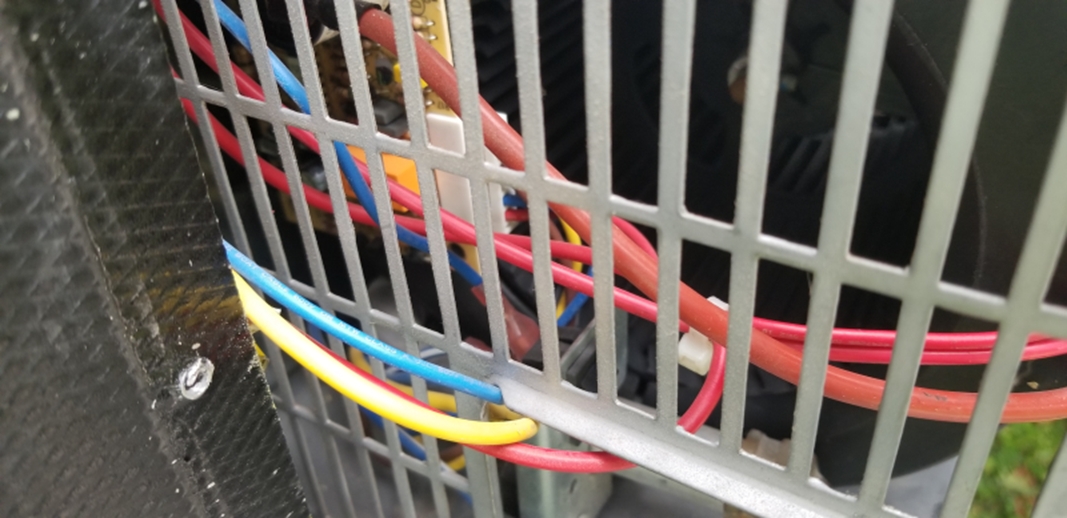
If you’re getting into the furnace compartment, be sure that each wire is connected to their intended locations. There can be a lot of wires.
Troubleshooting Task 2. Is Your Sail Switch Bad?
A bad RV furnace sail switch is usually somewhat easy to replace. The cost for doing so can range anywhere from $10 to $20. Get a sail switch that is compatible with your furnace make and model.
On some furnace types they are very accessible since it is indeed a common failure. Other furnace units may have the sail switch located in an accessible, but hard to reach spot. RV furnace sail switches come in various shapes and colors, but a general design is pictured above.
Troubleshooting Task 3: Check the Limit Switch
Different furnace models may have this located in different places on the furnace. The limit switch is another component that’s easy to test and replace. They range in price from $5 to $20. A limit switch is made of metal.
Troubleshooting Task 4: Test your RV Propane Furnace Igniter
If you can’t achieve a spark, you can’t have heat. An RV furnace igniter like the one shown above is often in a less accessible location. Replacement will most likely require you to remove the furnace unit out of its housing. Igniters can be purchased for $10 to $20.
Troubleshooting Task 5: Test the Control Board
This is the more expensive option should it need replacing. Depending on the model or age of your RV furnace, you may be able to buy a direct replacement from the manufacturer. Or, replacement could require you to obtain a similar board type from an after-market vendor. The price of an RV furnace control board can range anywhere between $50 to $100 or more.
RV Furnace Troubleshooting Summary
As you can see, there are a few ways to uncover why your RV furnace is not working. Depending on your level of expertise with testing, replacing, and troubleshooting, the diagnosis and actual RV furnace repair can vary. Doing it yourself requires you to feel comfortable with the task and the amount of work required to get it running again.
If all else fails when your RV furnace is not working, go to an RV service center. Just be prepared for a wait. You can also call a mobile RV technician in your area. Keep in mind that RV furnace parts may be hard or slow to obtain. A smart RV purchases the correct RV furnace replacement parts ahead of time, which practically guarantees that your winter camping nights will be as warm as you’d like them.

